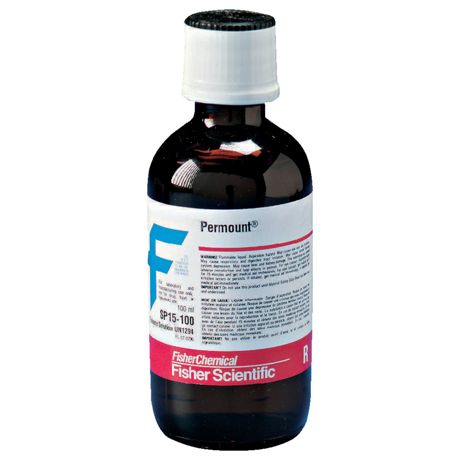Step One: Fixation
In the fixation stage, a fixative is used to modify tissue by stabilizing the protein, so it is resistant to further changes; thus, fixatives are used to protect tissue from degradation and to maintain the structure of the cells, including sub-cellular components, such as cell organelles (nucleus, endoplasmic reticulum and mitochondria).
Step Two: Processing
In the processing stage, tissues must go through a dehydration process to replace water with the material that will be used for embedding, so the tissue samples adhere to the embedding material. The most common technique is paraffin wax embedding.
Samples are immersed in multiple baths of progressively more concentrated ethanol to remove water from the tissues, followed by a clearing agent, such as xylene, to remove the alcohol and finally hot molten paraffin wax, which replaces the xylene and infiltrates the tissue.
Step Three: Embedding
In the embedding process, tissue samples and liquid embedding material are placed into molds and allowed to harden. The hardened blocks containing the tissue samples are then ready to be sectioned. Embedding can also be accomplished using frozen, non-fixed tissue in a water-based medium, usually a water-based glycol or resin.
Step Four: Sectioning
In the sectioning phase, the tissue is sliced into very thin (0.5 - 10 microns; 1000 microns = 1mm) sections using a microtome. These slices, usually thinner than the average cell, are then placed on a glass slide for staining. Frozen tissue embedded in a freezing medium is cut on a microtome in a cryostat.
Step Five: Staining
Routine staining is done to give contrast to the tissue being examined. Hematoxylin and Eosin (H&E) are the most commonly used stains in histology.
- Hematoxylin is combined with a metal mordant, such as aluminum, and the hematoxylin-aluminum complex is used to stain cell nuclei blue/black.
- Eosin is the most widely used counterstain in the routine staining of tissue sections. The best staining with eosin occurs at pH 4.5 to 5, and when used properly, at least three shades of pink can be obtained. Erythrocytes, collagen and the cytoplasm of epithelial or muscle cells should stain different shades of pink when using eosin.
There are many other techniques that have been used to selectively stain cells and cellular components.








